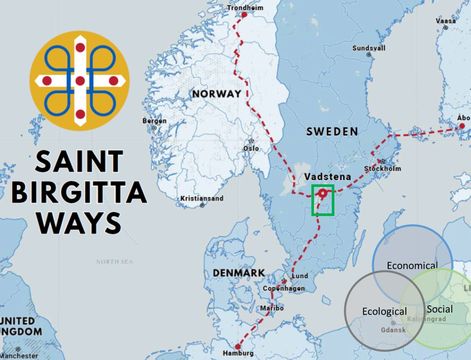Why do we need to measure?
Pilgrimage is recognised today as one of the fastest growing segments of the travel industry (UNWTO, 2015) with more than 300 million pilgrims every year. Evidencing this value and measuring its impact is key for all actors involved.
During Phase 1 of the Green Pilgrimage project Norfolk County Council (NCC) has worked with their academic partner the University of East Anglia (UEA) to review and recommend methodologies for measuring the economic, social and environmental impact of pilgrimage routes (including destinations).
What are the aims of the report?
The report aims to provide partners and others interested in valuing this area with an understanding of what to measure and why. Equally as important the report advises on resource appropriate ways to do this, for example by providing an overview of existing research and datasets, and tools that can generate estimated value where more resource intensive primary data collection or collation is infeasible.
What is included in the report?
The report includes background context on the Green Pilgrimage partner projects, an overview of recommended methodologies and tools, links to existing related studies and datasets, templates to audit current data collection, and three case studies that demonstrate:
- How to start a data collection journey and use data to inform decisions
- How primary research can be designed and undertaken
- How results from primary and secondary sources can be combined to produce policy statements
The three case studies focus on the work of the NCC Environment team who have increasingly collected data over the past 10 years to prove the effectiveness of investments and identify areas of need. The examples given of designing primary research and interpreting results centre on Walsingham – a national centre of pilgrimage in the UK. There is a strong rationale for measuring the impact here of the annual influx of 300,000 visitors on the local population of 650 people. This site currently has limited walking pilgrimage infrastructure. Research to provide evidence of the benefits of walking and support for development of infrastructure sits behind the rationale for data collection in this site.
What can be measured?
- Welfare value of a visit (the benefits against costs incurred indicated by a monetary figure)
- Physical and mental wellbeing measures
- Perceived value of any proposed improvements
- Indicators to measure the effect of pilgrimage on the environment
- Indicators to measure the effect of pilgrimage on the community
What’s next?
In Phase 2 of the Green Pilgrimage project (2020-2021), NCC plan to complete data collection with the minimum number of recommended responses to provide publishable results. The aim is to work with other projects to test the methodology, build a baseline of data and create a free-to-access online evaluation tool that will make evaluation accessible. Additionally more work is planned on valuing the wider indirect benefits to the local economy that were outside of the scope of this report. With thanks to all the Green Pilgrimage partnership for sharing their data collection experiences, and to the UEA for their continued work on this project.
To view the full report go to: www.interregeurope.eu/fileadmin/user_upload/tx_tevprojects/library/file_1581607243.pdf













